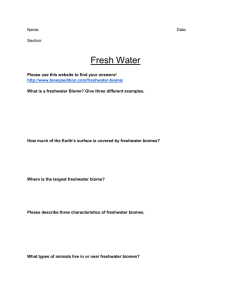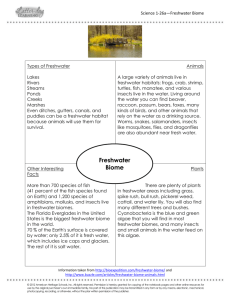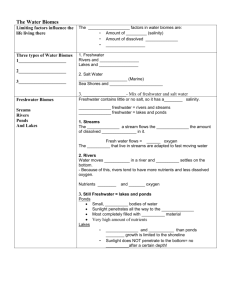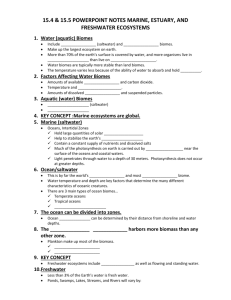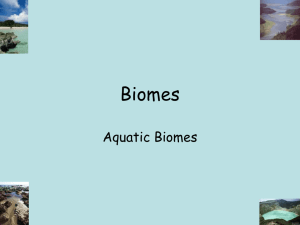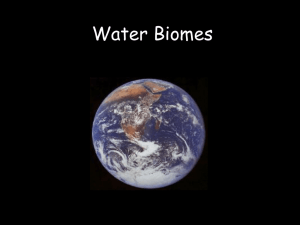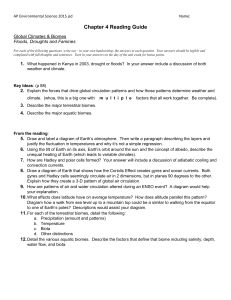File - Freshwater Biomes
advertisement
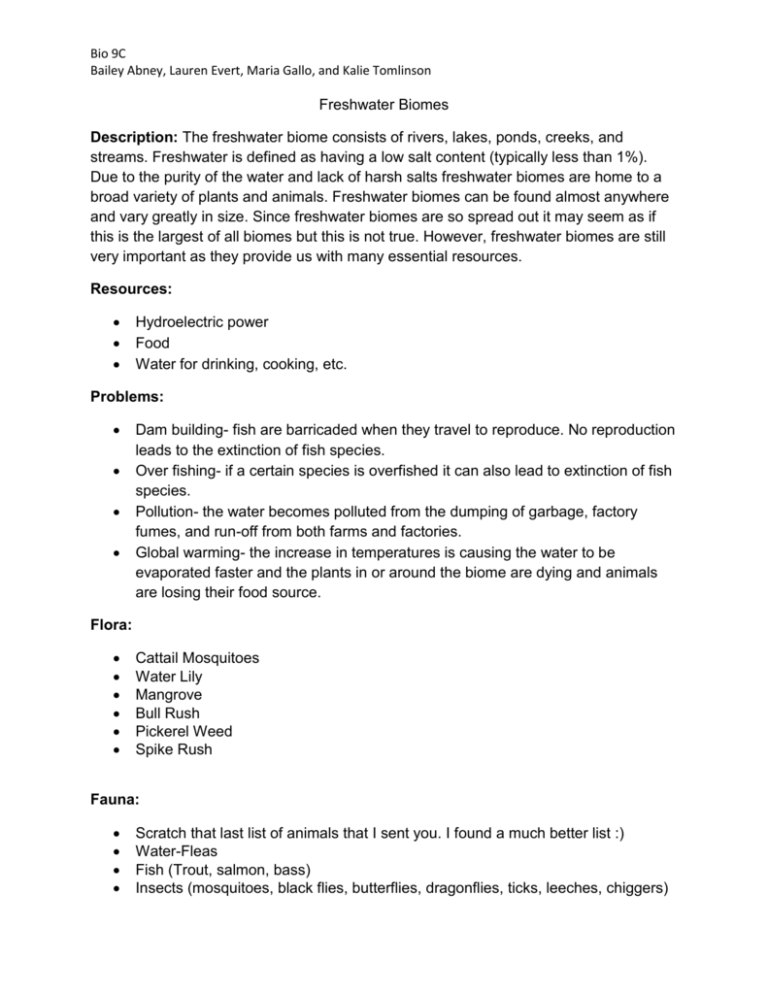
Bio 9C Bailey Abney, Lauren Evert, Maria Gallo, and Kalie Tomlinson Freshwater Biomes Description: The freshwater biome consists of rivers, lakes, ponds, creeks, and streams. Freshwater is defined as having a low salt content (typically less than 1%). Due to the purity of the water and lack of harsh salts freshwater biomes are home to a broad variety of plants and animals. Freshwater biomes can be found almost anywhere and vary greatly in size. Since freshwater biomes are so spread out it may seem as if this is the largest of all biomes but this is not true. However, freshwater biomes are still very important as they provide us with many essential resources. Resources: Hydroelectric power Food Water for drinking, cooking, etc. Problems: Dam building- fish are barricaded when they travel to reproduce. No reproduction leads to the extinction of fish species. Over fishing- if a certain species is overfished it can also lead to extinction of fish species. Pollution- the water becomes polluted from the dumping of garbage, factory fumes, and run-off from both farms and factories. Global warming- the increase in temperatures is causing the water to be evaporated faster and the plants in or around the biome are dying and animals are losing their food source. Flora: Cattail Mosquitoes Water Lily Mangrove Bull Rush Pickerel Weed Spike Rush Fauna: Scratch that last list of animals that I sent you. I found a much better list :) Water-Fleas Fish (Trout, salmon, bass) Insects (mosquitoes, black flies, butterflies, dragonflies, ticks, leeches, chiggers) Bio 9C Bailey Abney, Lauren Evert, Maria Gallo, and Kalie Tomlinson Amphibians (frogs, toads, salamanders) Water Moccasins Alligators Freshwater Crocodiles Turtles (snapping, box) Birds (ducks, geese, swans, heron, crane) Mammals (Manatee, otters, beavers) Map: Figure 1. The above map shows where freshwater and other marine biomes can be found around the world. Website: freshwaterbiomemmstc.weebly.com
